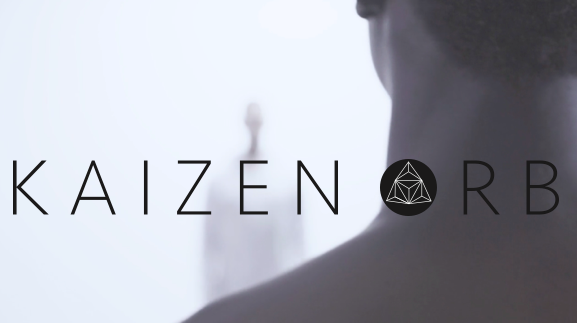In the realm of filmmaking, artists will always have a clear vision of what their film is intended to evoke. Some films are purposely left up to interpretation. Others are very straight forward, recalling a true event that may have been forgotten from our history. Action, drama, horror, comedy, romance, sci-fi are a few examples of what I’d call, one-dimensional. Once the film is over, you either like it or you feel cheated. Films that cause you to debate interpretation are less common and multi-dimensional. Youth 3000 is one such film. It’s artistic and plays like a painting in a gallery. The type of piece capable of drawing a crowd of spectators all interpreting something different.
The short film was created by two brilliant young women Ace-A and Ace-C. Fashion designers that study film in their own time but combine/explore other mediums such as music, poetry and photography. They work out of a multidisciplinary design studio, Kaizen Orb and the in-house label is C O N CEN T R I C.
I recently sat down with the both of them to better understand where the inspiration came from.
“Having watched the film a couple of times, I was still not convinced I was interpreting the films vision accurately. Could you explain to me the films premise?”
“We actually intended the audience to form their own interpretation of the film without making the message to obvious. The film takes place in the year 3008 and deals with the Simulation Theory. The theory is that the world’s population is a simulation created from a larger entity, similar to the Sims video game. The main character Apollo, played by Michael Stewart is seeking inner reflection and falls to the sidelines of society. He refuses to allow his brain to be scanned and uploaded to become another robotic human being. During his inner reflection he encounters a person in his mind that embodies race, information and future. He is witness to the future of the future.
The idea that to much information can cause you to die from what you know is evident in the film. Apollo can no longer go on with what he knows, seeing society controlled like robots and kills himself while lying in a bathtub.”
The film ends with Apollo’s suicide. His body lay motionless in a bathtub reminiscent of the famous painting of 1793, The Death Of Marat. The painting depicts the murder of the French revolutionary leader found murdered in his bath.
There is a lot going on this short seven minute film. Full of abstract metaphors as well as a piece of audio from a Donald Trump speech, talking over a speech from Hitler. I think you can draw your own conclusions on that one. There is no dialogue in the film and symbology is the mechanism for the story.
Ace-A and Ace-C enjoy working with multiple mediums and take them all very seriously before cross-pollinating them. Working on only three mediums at a time allows them to fuse them together in an organized fashion. They admit that although they may not be experts in every medium, they will seek out and find others that are. They allow for creative collaboration with their vision always at the forefront. It was directed by Olivia Lingdren, DOP was Paolo Altruda. It was edited by Yannie Yu and their colorist was Ali Heraize.
They consider themselves outsiders in the fashion industry. Their collection is not seasonal but rather a continual collection that they’ll keep building for the next 500 years if they choose. They are continuously perfecting the line and its needs.
Interesting enough, they do all their own casting and are always in the mind-frame of connecting. If they are in the public, restaurant, street and they spot someone that has a great look or vibe, they’ll approach them to use in a film or photo session. The actor Michael Stewart had gained interest through visiting their website. He reached out and met with them. They liked his look and wrote him into the script. The character Oberon (Tarrique-Imani Atkinson) was found working as a background actor. They originally worked with him in a photo shoot but were so impressed with him, they also wrote him into the story.
Although they had been discussing the film for a year, pre-production and shooting was finished in a month and post took one month for music and editing. Two locations were used, one was at Suicide Creek in Mission and the other, a studio in town. They wanted it finished in time to submit it to the worlds largest fashion film festival held in Paris in May. During the screening, they will have men modeling their unisex dress shirts with stills from the film printed on them. For the music, they found a composer/instructor (Brian Lee Topp) at UBC working on his masters to contribute an original score. They informed him of the elements they wanted in the piece then let him build around it.
The title of the film is broken up into two meanings. Youth stands for the group of optimistic people seeking answers regarding the future of the world. 3000 refers to Race, information and future. It also represents the year 3008. It’s a futuristic film that offers a glimpse of the future and where they see it heading.
The two young women also write poetry and have been submitting stills from the film with poetry attached to a couple magazines. It’s an extension of Youth 3000.
They are submitting the film to two festivals per month and will let it travel the world representing their
brand much like a clothing line. New York, Melbourne, Paris and Cannes are festival targets. It will screened at a gallery in Vancouver in April.
One fun fact they left me with was, the floor and walls of the studio they used had to be painted before filming. They created a waterfall scene and brought in some chickens. It had to be repainted once they were finished.
No animals were harmed in the making of this film.




